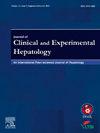使用大语言模型实时检测药物性肝损伤:来自临床记录的可行性研究
IF 3.3
Q2 GASTROENTEROLOGY & HEPATOLOGY
Journal of Clinical and Experimental Hepatology
Pub Date : 2025-06-21
DOI:10.1016/j.jceh.2025.102627
引用次数: 0
摘要
药物性肝损伤(DILI)是一个重要的临床问题。目前的检测方法往往是滞后的。使用大型语言模型(LLM)对电子医疗记录(emr)进行实时分析可以实现早期监测。目的探讨基于llm的从非结构化临床记录中提取药物信息的DILI实时识别评估系统的技术可行性。方法采用大语言模型(large language model, LLM)开发了一个从临床文献中提取药物清单的系统。提示被迭代地改进以获得最佳性能。我们整合了DILIrank和LiverTox的DILI风险数据,利用LLM和算法匹配将提取的药物与数据库条目联系起来。我们使用RxNORM数据库和手动输入错误的药物,以及NHANES数据库的结构化药物列表来验证准确的结果。结果采用NHANES、RxNORM和真实案例各30个条目,基于llm的药物提取精度为0.96,召回率为0.97,f1得分为0.97%。对于NHANES数据,没有发现错误。应用于真实案例和输入错误的数据集,基于llm的提取效果可以接受,f1得分分别为0.94和0.97。大多数错误是由于商品名称和组合药物名称。结论本研究证明了LLMs从临床记录中准确提取药物的潜力,这是实时评估DILI风险的关键一步。然而,该系统在实施前需要进一步开发和临床验证。未来的工作将集中在匹配方法、临床验证、电子病历整合和开发代理人工智能来分类未来DILI风险。本文章由计算机程序翻译,如有差异,请以英文原文为准。

Toward Real-time Detection of Drug-induced Liver Injury Using Large Language Models: A Feasibility Study From Clinical Notes
Background
Drug-induced liver injury (DILI) is a significant clinical problem. Current detection methods are often delayed. Real-time analysis of electronic medical records (EMRs) using a large language model (LLM) could enable earlier surveillance.
Objective
To evaluate the technical feasibility of an LLM-powered system for real-time DILI identification assessment by extracting medication information from unstructured clinical notes.
Methods
We developed a system using a large language model (LLM) to extract medication lists from clinical text. Prompts were iteratively refined for optimal performance. We integrated DILI risk data from DILIrank and LiverTox, utilizing LLM and algorithmic matching to link extracted medications to database entries. We utilized the RxNORM database and manual mistyped medication, as well as the NHANES database for a structured medication list, to verify accurate results.
Results
Using 30 entries each from NHANES, RxNORM, and real-world cases, the LLM-based medication extraction achieved a precision of 0.96, recall of 0.97, and an F1-score of 0.97%. For NHANES data, no errors were found. Applying to real-world cases and mistyped dataset, the LLM-based extraction fared acceptably, with F1-scores of 0.94 and 0.97, respectively. The majority of error are due to trade name and combined medication names.
Conclusion
This study demonstrates the potential of LLMs for accurate medication extraction from clinical notes, a crucial step towards real-time DILI risk assessment. However, the system requires further development and clinical validation before implementation. Future work will focus on matching methods, clinical validation, EMR integration, and development of an agentic AI to triage future DILI risk.
求助全文
通过发布文献求助,成功后即可免费获取论文全文。
去求助
来源期刊

Journal of Clinical and Experimental Hepatology
GASTROENTEROLOGY & HEPATOLOGY-
CiteScore
4.90
自引率
16.70%
发文量
537
审稿时长
64 days
 求助内容:
求助内容: 应助结果提醒方式:
应助结果提醒方式:


